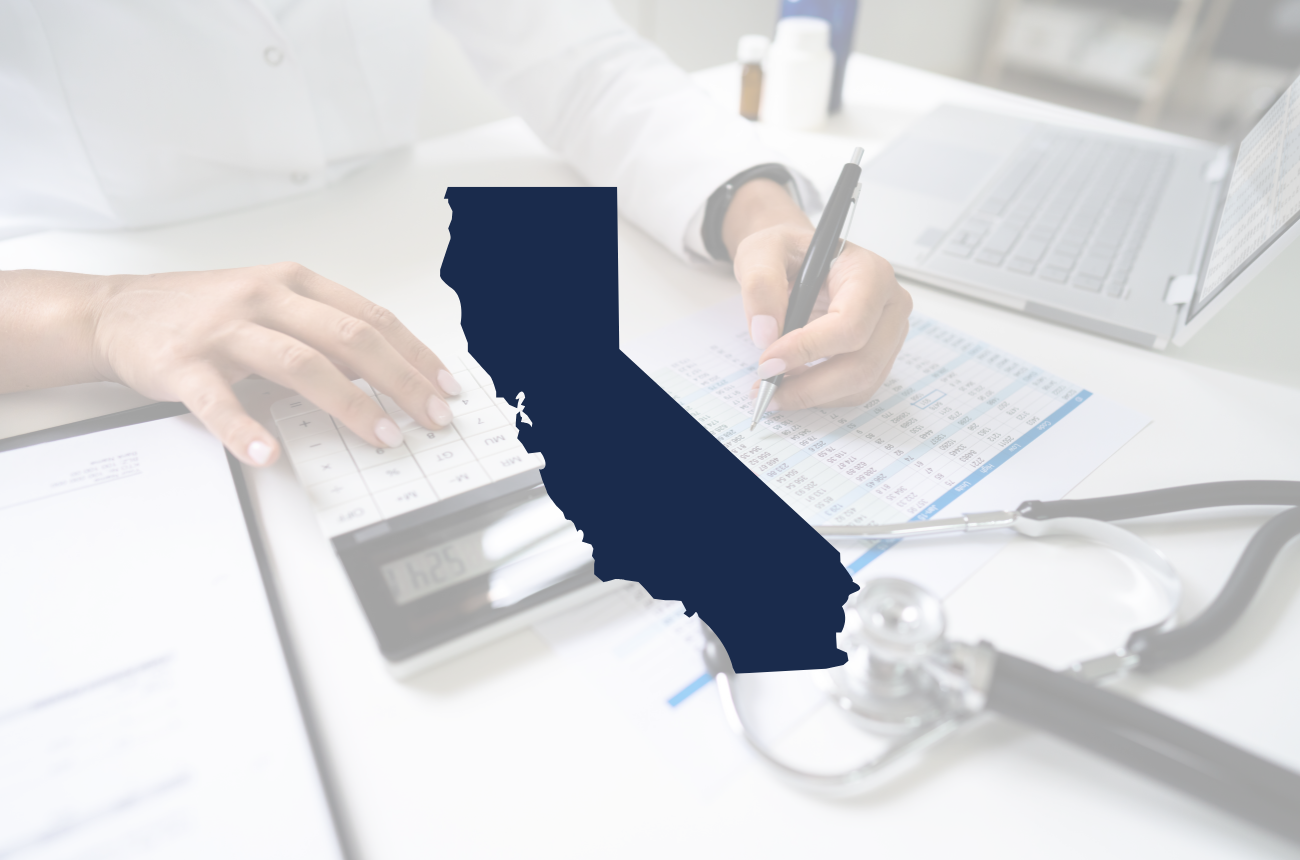Launching a medical practice in California is a rewarding step, but setting up billing is one of the most critical and complex parts of the process. California’s payer mix, regulatory environment, and patient population bring unique requirements compared to other states. Getting billing right from the start ensures timely payments, compliance, and satisfied patients.
Here’s a step-by-step guide to setting up medical billing in California.
Step 1: Register and Meet Compliance Requirements
Before billing, your practice must have the proper legal and regulatory foundation in place:
- Business Entity: Register your corporation or professional limited liability company (PLLC) with the California Secretary of State.
- Provider Licensing: Confirm that every provider holds an active license with the Medical Board of California or the relevant licensing board. California providers must also register with DHCS if offering certain services (e.g., mental health, substance use disorder treatment).
- Tax & Identification: Obtain an EIN (tax ID) and National Provider Identifiers (NPIs) for your practice and individual providers.
- CAQH Profile: Keep your CAQH profile up to date—commercial payers rely on it for credentialing.
- Facility Certifications: If your practice performs lab work, secure CLIA certification. Facilities may also need approvals from the California Department of Public Health (CDPH).
- HIPAA & CMIA Readiness: Establish compliant systems for patient data security and ensure your EMR or billing software meets HIPAA requirements. California also enforces the Confidentiality of Medical Information Act (CMIA), which is stricter than HIPAA in some areas.
Step 2: Enroll with California Payers
California has its own payer landscape that practices must navigate:
- Medicare: Apply through PECOS to bill Medicare patients.
- Medi-Cal (California Medicaid): Enroll through the Department of Health Care Services (DHCS) using the Provider Application and Validation for Enrollment (PAVE) system. Revalidation is typically required every 5 years.
- Commercial Insurers: Apply to join networks such as Anthem Blue Cross of California, Blue Shield of California, Kaiser Permanente plans, Aetna, Cigna, and UnitedHealthcare. Credentialing can take 60–120 days.
- Medi-Cal Managed Care Plans: Many patients are enrolled in managed care programs run by health plans like L.A. Care Health Plan, IEHP, Health Net, and Molina Healthcare. Practices often need to contract with both Medi-Cal and its managed care plans.
- Workers’ Compensation: Register with the California Division of Workers’ Compensation (DWC) to treat injured workers and bill workers’ comp insurers. Compliance with the Medical Billing and Payment Guide and electronic billing (eBill) standards is required.
- Other Programs: If serving special populations, consider programs such as California Children’s Services (CCS) or county-based coverage initiatives.
Step 3: Decide on Your Billing Model
California practices typically choose between:
- In-House Billing: Your staff manages claims directly. This offers control but requires billing expertise and ongoing training.
- Outsourced Billing: A billing service handles claims and collections. Many California practices outsource due to the administrative burden of Medi-Cal and managed care payers.
- Hybrid Models: Some practices keep eligibility checks and patient billing in-house but outsource claims submission and collections.
Step 4: Build Systems and Workflows
Once credentialed, put systems in place to keep billing consistent:
- EMR & Billing Software: Use an integrated platform that combines charting, scheduling, and billing. California practices benefit from software that connects to clearinghouses for electronic claims, remittances, and real-time eligibility checks.
- Clearinghouse & Claim Scrubbing: Claims are reviewed before submission to reduce rejections. Errors can be corrected before reaching the payer.
- Payment Posting & Reconciliation: Record payments against the claim and reconcile with Explanation of Benefits (EOB) or Electronic Remittance Advice (ERA).
- Denial Management: California payers (especially Medi-Cal managed care plans) are strict about timelines. Create a clear process for resubmitting or appealing denied claims.
- Patient Statements: Clearly explain co-pays, deductibles, and payment options. Under the No Surprises Act and California’s AB 72 balance billing law, provide good faith estimates for self-pay patients and ensure patients aren’t improperly balance billed.
- Timely Filing: California Medi-Cal and Workers’ Comp claims have strict filing deadlines (as short as 30–90 days). Practices should configure billing software to flag approaching deadlines.
Step 5: Train Staff on California-Specific Rules
Your staff should be well-versed in:
- Eligibility Verification: Many Medi-Cal patients are in managed care—confirm coverage before visits.
- Workers’ Comp Billing: California has detailed billing rules, including required formats and timelines under the DWC eBilling system. Staff should also understand the Medical Treatment Utilization Schedule (MTUS), which guides billing and authorization.
- Coding & Documentation: Ensure accurate use of CPT, HCPCS, and ICD-10 codes for all claims.
- Patient Communication: Train staff to explain financial policies clearly—California patients often juggle Medi-Cal, managed care, or exchange-based insurance plans.
- California’s AB 72: This bill regulates balance billing for out-of-network services at in-network facilities (complementing the federal No Surprises Act).
Step 6: Monitor, Audit, and Improve
Billing is ongoing—not one and done. California practices should:
- Track denial trends by payer (especially Medi-Cal vs. commercial).
- Monitor days in accounts receivable (A/R) to keep revenue flowing.
- Stay updated with California-specific payer rules and annual CPT/ICD updates–DHCS releases Medi-Cal provider bulletins frequently. Assign a staff member to track updates on a monthly basis
- Audit billing regularly to ensure compliance with Medicare, Medi-Cal, managed care contracts, HIPAA, and CMIA.
Final Thoughts
Setting up medical billing in California requires careful attention to state-specific payer networks, Medi-Cal managed care structures, workers’ compensation rules, and strict compliance standards. By laying a strong foundation and continuously refining workflows, your practice can ensure healthy revenue and compliance.
OptiMantra makes this process easier. Our integrated EMR and practice management platform supports California providers with end-to-end billing workflows, electronic claim submission, denial tracking, and even optional revenue cycle management (RCM) services. Whether you’re managing Medicare, Medi-Cal, or commercial insurance, OptiMantra helps you reduce errors, accelerate reimbursements, and keep your focus on patient care.
Schedule a demo today to see how OptiMantra can streamline billing for your California practice.
Disclaimer: This article is for informational purposes only. Always consult legal or compliance professionals when setting up billing systems in California.





